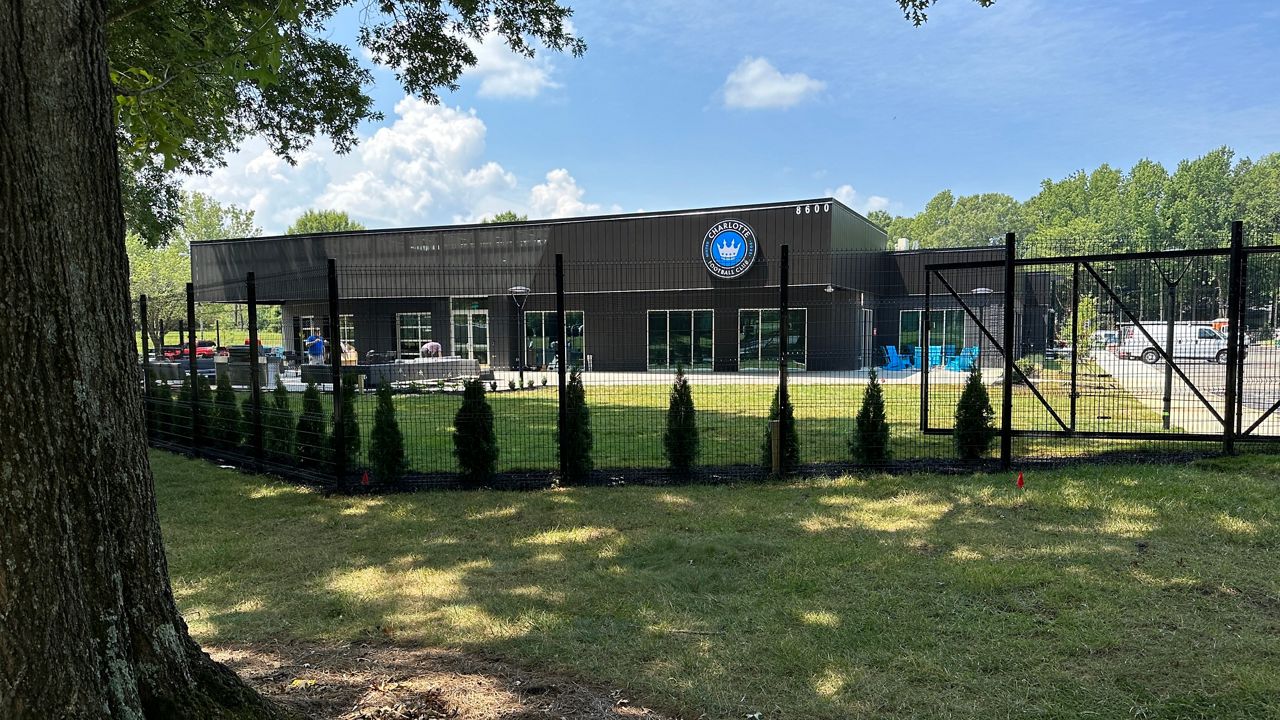CHARLOTTE, N.C. — Advancements in sports medicine are getting athletes back in game shape faster than ever.
“New technologies, new machines, doctors learning a lot more, a lot quicker,” said one North Carolina basketball star, after recovering from a ruptured Achilles.
Kennedy Meeks is a 2017 NCAA National Champion. With the help of medicine, he’s also back in the gym after recovering from a ruptured Achilles and surgery in the last year.
Meeks, a former University of North Carolina Tar Heel who now plays professional basketball overseas, said sports medicine has improved dramatically since he was playing college ball from 2013 to 2017.
It is a trend his doctor acknowledges as well.
“We’re always looking for new ways to treat people that are safe and effective, minimize recovery time and maximize their full, functional recovery,” Dr. John Marcel said.
Marcel, an orthopedic surgeon for Novant Health, performed Meeks’ Achilles repair and has monitored his recovery since the surgery.
“When I was in residency, we used to make large incisions to treat these Achilles ruptures. We’re talking, 6 or 8 centimeter incisions,” Marcel explained.“When I was in residency, we used to make large incisions to treat these Achilles ruptures. We’re talking, 6 or 8 centimeter incisions,” Marcel explained. “As time has gone on, these less invasive techniques have gained traction and popularity.”
After Meeks ruptured his Achilles in July 2022, he and Marcel decided to operate and repair the tendon, using a new technique requiring a much smaller incision.
“Outcomes are excellent, recovery is great, complication rates are lower. One of the biggest things you worry about with an Achilles surgery is the wound healing properly. With a smaller incision, it stands to reason, you know, lower likelihood of there being some type of wound complication,” Marcel said.
And, they are patient-approved. Well, at least one patient approves.
“That’s what we did you know, like you said, he made a smaller incision, allowed me to get back to Earth sooner than possible and I’m thankful — you know, cause it’s allowed me to open new doors to experience the weight room a lot more,” Meeks added.
Achilles ruptures and other athletic injuries are seeing a small uptick as people return to group athletic activities after COVID-19. Achilles ruptures are most common in men, ages 30-40, who play sports like tennis, basketball or soccer, according to Marcel.
However, not all of them require surgery. Marcel said surgery depends on the patient, how much future strain they plan to put on the tendon and other medical history. For example, older patients and diabetics are often not good candidates for a surgical repair.
“In athletes, we generally perform the repair to reset the tension of the Achilles tendon. So, when the tendon ruptures, the two ends of the tendon retract,” Marcel explained.
Usually, it takes about nine months for a person to be fully recovered and a year to maximize strength in the tendon, according to Marcel.
“I always knew I’d be back. I’ve been working at this for 20-plus years. So, it’s a good opportunity to come back and feel like myself again,” Meeks said about his recovery.
Like a coach updating a game plan, Meeks credits Marcel and the new surgical technique for his quick rebound to the court and, hopefully, professional basketball this fall.
“It’s the best feeling,” Meeks said while working out, “Because, that’s what I’ve been working hard toward for this whole entire year. You know, blood, sweat and tears, in the gym every day. Trying to be better. So, it’s going to be rewarding to sign a deal and get overseas.”










